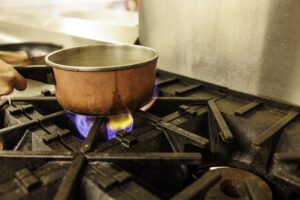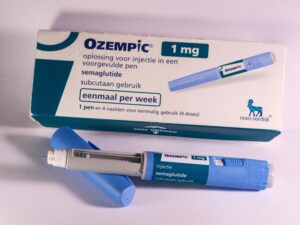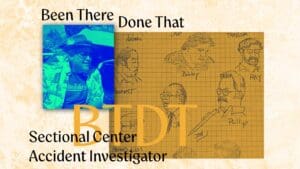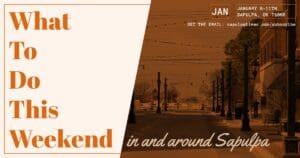Rachel Whitney, Curator, Sapulpa Historical Museum
Ready. Set. Go! And they’re off!
“Charles C. Pyle, often called Cash and Carry Pyle… inaugurated the first Trans-American Footrace,” also known as the Trans-Contiental Footrace. It is better known as the “Bunion Derby, an ambitious 3,455-mile-long foot race from Los Angeles, California to Chicago, Illinois, to New York City, New York” in 1928.
Route 66, the Mother Road, was built from LA, California to Chicago, IL in 1926. One of the now infamous destinations, attractions, and ways for travel, needed a little boost of promotion in the beginning. As a way of promoting the newly established Main Street of America, Pyle created the footrace, and the main route for the runners was Highway 66.

In Sapulpa, historic Route 66 followed Dewey Ave, heading east. The route turned north on Division, then again back east to Mission. It then continued north, toward Tulsa, connecting Sapulpa with many other Route 66 destinations.
“The race was to begin on March 4, 1928, and finish near the end of May.” The prize money for the first-place runner was set for $25,000*. “The total distance was over 3,4000 miles in less than three months. There would be a slough of cars to follow along the race, including support teams, journalists, a shoe repairman, and the first mobile radio station.”
*Note: $25,000 in 1928 is roughly worth $437,000 today.
“Race participants would have to sleep in tents along the way, and food would be served once a day in a chow-line fashion. The chamber of commerce in towns along the way would pay Pyle for the opportunity to have the runners stop in their town, and he would even set up carnivals at some points to take advantage of the crowds. At these carnivals, the runners could earn money by selling race programs and autographs.”
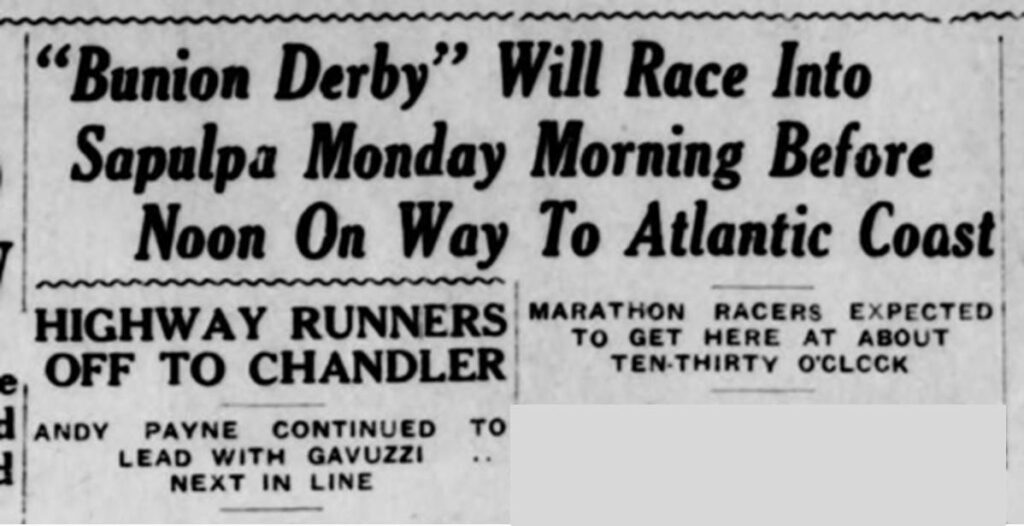
The Bunion Derby began with nearly 300 runners eager to participate in the lengthy race. With 275 runners beginning, “so many runners developed foot problems a week into the competition,” that by the end of the first day, 77 runners dropped from the race. With only 145 runners remaining, a 20-year-old from Foyil, Oklahoma was among the leaders in the race.
Andy Payne, Cherokee, earned several track awards in high school. “He trained on the back roads of eastern Oklahoma in any weather conditions, and developed a running style his father described as ‘a machine-like trot that keeps him moving but doesn’t hurt him.’”
By mid-April, the runners would make their way to Oklahoma City.
“As more dropped out due to injuries, Payne became the leader. He persisted even when he was diagnosed with tonsillitis. As the race made its way into Oklahoma, people ran alongside Payne, snagging autographs and pictures of the local hero. In Oklahoma City, the governor cheered him on.”
This week in Sapulpa history, the runners raced their way through Downtown Sapulpa.
On April 16th, “Peter Gavuzzi leads Highway 66 marathon runners into Sapulpa.” Gavuzzi, from England, “was leading the field when he sped past the Creek County Court House at 10:34 this morning. Oklahoma’s own Andrew Payne followed the flying Gavuzzi nearly 20 minutes later, trotting down Dewey Avenue by the Court House at 10:53. Close on Payne’s heels was Ginsto Umek, from Italy, who made it past the Court House at 10:55.”

“Runners were still going through Sapulpa at 3 o’clock…A large crowd greeted the runners as the reached Tulsa – the halfway mark in their cross continent race. Andy Payne, who led in elapsed time for several days, came in third today.” “And in Payne’s hometown of Claremore, Will Rogers was in the crowd, applauding the young man.”
On May 26th, “crossing the finish line 84 days after the race began, Payne’s total running time was 573 hours, 4 minutes, 34 seconds, at an average speed of 6 miles per hour.” It was that “only four of the original runners made it to the Madison Square Garden’s finish line. In fact, of the 275 who entered the race, half of them dropped out by the fourth day.*”
*Note: between Chicago to New York, “the athletes once logged 74.6 miles in a day. Only 55 contestants finished the race,” in total.
Andy Payne won the $25,000. The second-place runner, John Salo, won $10,000. Third place received $5,000, and fourth place earned $3,000. Fifth place to tenth place received $1,000 each.
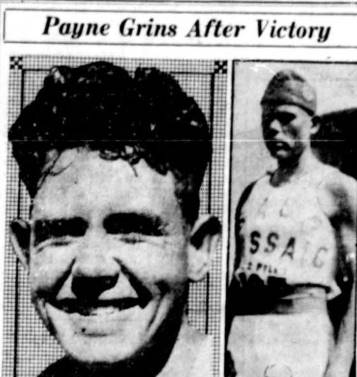
“After winning the footrace and receiving the prize, he used the money to pay off the mortgage on his father’s farm.*” He would further his education and receive a law degree, as well. “At Oklahoma City University, his interest lay in land acquisition with an eye towards oil production.”
*Note: “Although, he only got $18,000 of the promised $25,000.”
Payne would become Clerk of the Oklahoma Supreme Court and was re-elected five times, spanning his position for decades. “He served from January 1935 to December 1972.”
“Payne died in 1977. Through efforts of the Foyil Heritage Association, the Rogers County Historical Society, and private donations, a park and statue was erected in the early 1990s.”
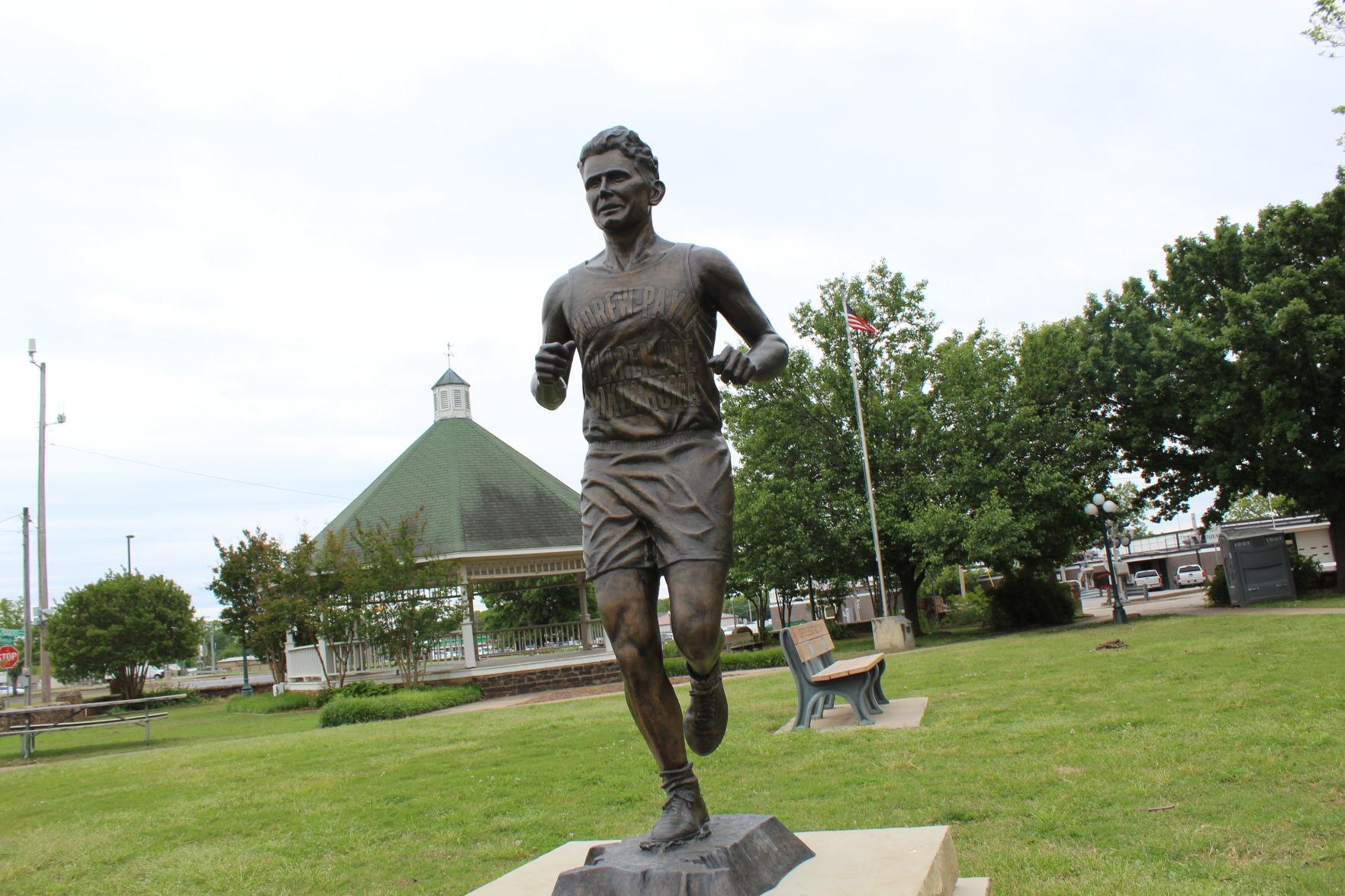
*Note: “While the 1928 race was not a financial success, Pyle organized a 1929 ‘return’” race from New York to Los Angeles. “Johnny Salo, who finished in 2nd place in 1928 and 1st in 1929, became the fastest person to twice run across the continental United States in consecutive years.”
(Sapulpa Herald, April 14, 1928, April 16, 1928, May 24, 1928, May 25, 1928, May 26, 1928, May 27, 1928, May 28, 1928, June 1, 1928, June 2, 1928, November 27, 1988; County Democrat News, April 12, 1928, May 31, 1928; History Museum on the Square; Wikipedia; RoadsideAmerica.com; Oklahoma Historical Society; Claremore Museum of History; Claremore Daily Progress; Oklahoma Magazine; LegendsofAmerica.com; Oklahoman; BlackPast.org; Runnersworld.com; Navajo-Hopi Observer)



